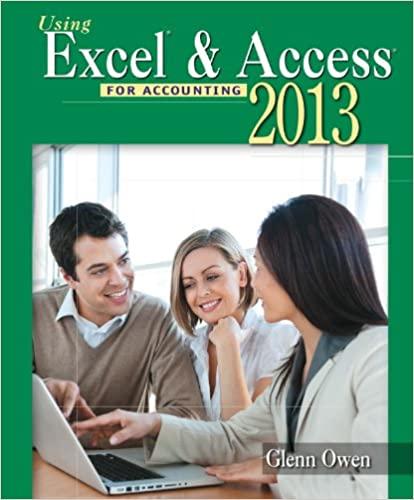Question
ALL ANSWERS SHOULD BE ORIGINAL AND A MINIMUM OF 100 WORD S PER ANSWER. 1. What is earnings and profits and why does it matter
ALL ANSWERS SHOULD BE ORIGINAL AND A MINIMUM OF 100 WORDS PER ANSWER.
1. What is earnings and profits and why does it matter when a corporation pays a dividend to shareholders?
2.
A corporation has one shareholder owning 100% of its stock. The corporation has $1 Million Earnings and Profits. The tax C corporation distributes a patent to the shareholder. The patent has $250,000 fair market value and has a $25,000 tax cost (basis) at the corporate level.
What is the tax consequences to the corporation if any?
What is the tax consequences to the shareholder?
What tax cost (basis) does the shareholder have in the patent?
3.
DERICK INC distributes one asset to its 100% shareholder (non liquidating distribution). The intangible asset has $5 Million FMV and $2 Million Tax Basis for DERICK INC. The corporation pays taxes at 35%.
You may consider explaining the $ affect the distribution has on DERICK's E AND P account considering the gain recognized and the taxes paid.
Hint: the CH 4 text readings discuss this issue under this title:
Effect of Property Distributions on the Distributing Corporation's E&P.
4.
CHINO INC has two shareholders (Nate and Natie) and each shareholder owns 50% of the corporate stock. CHINO has been very successfully over the years. Natie decides to enter into aSection 317(b)(Redemption)transaction with CHINO INC. The corporation will buy 1/2 of Natie's stock for $2 Million. Natie has $1 Million basis total in her stock.
This transaction most likely qualifies for what type of treatment for Natie?
What is the tax ramifications for Natie as she pays capital gains at 20% rate?
Hint: you can find information on this issue in the CH 4 Readings at:
TAX CONSEQUENCES OF THE REDEMPTION TO THE SHAREHOLDER
SUBSTANTIALLY DISPROPORTIONATE REDEMPTIONS
5.How do we define a complete corporate liquidation and what does this all mean for the shareholder and the corporation?
6.
A corporation has one shareholder owning 100% of its stock. The corporation has $1 Million Earnings and Profits. The tax C corporation distributes a patent to the shareholder. The patent has $250,000 fair market value and has a $25,000 tax cost (basis) at the corporate level.
What is the tax consequences to the corporation if any?
What is the tax consequences to the shareholder?
What tax cost (basis) does the shareholder have in the patent?
7.
Freddie has a 10% interest in a tax partnership. The tax partnership pays off a $1 Million loan during the year.
How does this loan payoff affect Freddie's tax basis?
8.
What is a distribution from a tax partnership to a partner?
What is the difference between a non liquidating distribution and liquidating distribution?
Step by Step Solution
There are 3 Steps involved in it
Step: 1

Get Instant Access to Expert-Tailored Solutions
See step-by-step solutions with expert insights and AI powered tools for academic success
Step: 2

Step: 3

Ace Your Homework with AI
Get the answers you need in no time with our AI-driven, step-by-step assistance
Get Started


